In the ever-evolving world of culinary technology, the demand for innovative cooking solutions has surged. Among these advancements, the industrial smokeless grill has emerged as a game-changer, offering a healthier, more sustainable alternative to traditional grilling methods. This article delves into the nuances of the smokeless grill market, focusing on the pivotal role of Original Equipment Manufacturers (OEMs) and the dynamic consumer trends that are shaping this exciting sector.
Introduction to Industrial Smokeless Grills
Industrial smokeless grills have emerged as a revolutionary innovation in the culinary world, offering a smoke-free alternative to traditional grilling methods. These advanced appliances are designed to replicate the authentic taste and texture of grilled foods while significantly reducing smoke and odor, making them an attractive option for both commercial kitchens and home cooks alike.
At the heart of these grills lies a sophisticated system that captures and recirculates smoke, ensuring that the cooking process is as clean as possible. This technology has not only caught the attention of food enthusiasts but has also become a game-changer in the commercial kitchen industry, where efficiency and health considerations are paramount.
The journey of industrial smokeless grills began with a simple idea: to create a cooking experience that combines the traditional charm of grilling with modern health and environmental benefits. Over the years, this concept has evolved into a range of products that cater to diverse needs, from high-volume restaurant kitchens to intimate outdoor dining setups.
One of the most notable features of these grills is their ability to control the temperature and cooking environment with precision. This precision is crucial for achieving the perfect sear on meats and vegetables, ensuring that each dish is cooked to perfection. The consistent heat distribution across the grill’s surface is another key advantage, as it eliminates hotspots that can be problematic in traditional grills.
In the commercial setting, the benefits of industrial smokeless grills are numerous. They not only improve the indoor air quality by reducing smoke and odors but also reduce the need for additional ventilation systems, which can be costly and energy-intensive to install and maintain. For operators looking to create a healthier environment for their staff and customers, smokeless grills are an excellent choice.
For home cooks, the appeal of smokeless grilling is equally strong. Many consumers are becoming more health-conscious, seeking out cooking methods that are not only delicious but also safe for their families. Smokeless grills allow for grilling without the smoke that can linger in the home, making it easier to enjoy outdoor cooking without the worry of lingering smells.
The design of industrial smokeless grills often reflects a commitment to innovation. They come in various sizes and configurations, from countertop models suitable for small-scale operations to large, industrial-grade units capable of handling high-volume cooking. Many models also feature advanced control systems, including digital temperature settings and timers, which allow users to precisely manage the cooking process.
From a sustainability standpoint, smokeless grills are a win. They consume less energy than traditional grills, and since they do not require constant cleaning due to the absence of smoke, they also save on maintenance costs. This makes them a cost-effective choice for businesses looking to optimize their operations while reducing their environmental footprint.
The materials used in the construction of these grills also contribute to their appeal. Many are made from durable stainless steel, which not only withstands the rigors of daily use but also maintains its appearance over time. Some models are even designed to be modular, allowing for easy replacement of parts and adaptability to changing kitchen layouts.
In recent years, the demand for smokeless grills has been on the rise, driven by a combination of health concerns, environmental awareness, and the increasing popularity of outdoor dining experiences. This demand has spurred innovation in the industry, with manufacturers continually developing new features and improvements.
In conclusion, industrial smokeless grills represent a significant advancement in the grilling technology landscape. They offer a range of benefits that cater to both commercial and residential needs, from improved air quality and reduced maintenance to enhanced cooking control and sustainability. As the market for these grills continues to grow, it’s clear that they are here to stay, reshaping the way we think about grilling and cooking.
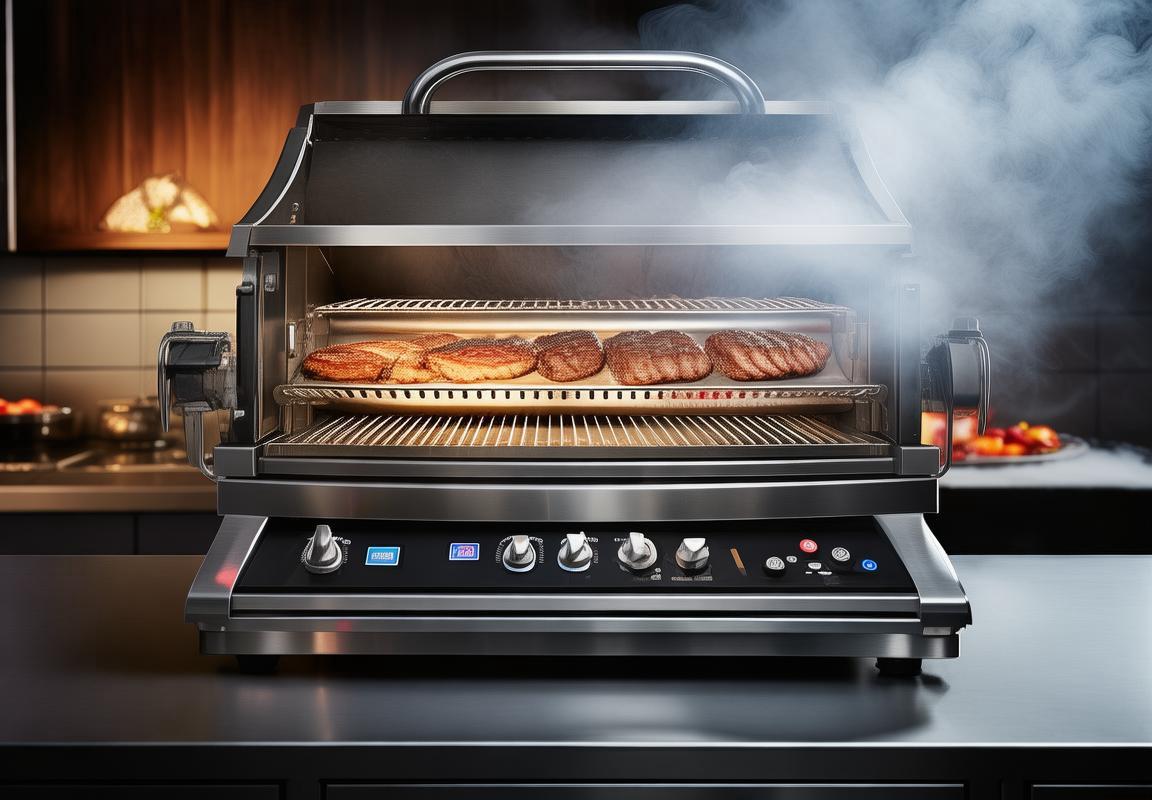
Market Dynamics in the Western Region
In the Western region, the market dynamics for kitchen appliances, particularly industrial smokeless grills, have been experiencing a fascinating transformation. The landscape is marked by several key trends and consumer behaviors that are reshaping the industry.
The rise of health consciousness has spurred a demand for healthier cooking methods. Consumers are increasingly seeking alternatives to traditional grilling, which can produce smoke and harmful compounds. This shift has opened the door for smokeless grill technology to gain traction in the market.
The culinary industry’s move towards sustainability is another driving force. Restaurants and commercial kitchens are looking for eco-friendly appliances that reduce waste and minimize their carbon footprint. Smokeless grills offer a solution that not only reduces smoke but also allows for more efficient use of energy.
The adoption of smart technology in kitchen appliances is also a significant trend. In the Western region, there’s a growing preference for appliances that can be controlled remotely or through smartphone apps. This technology integration in smokeless grills not only adds convenience but also enhances the overall user experience.
The competition within the market is fierce, with numerous brands vying for market share. This competition has led to innovation, with manufacturers constantly striving to outdo each other in terms of design, functionality, and price. As a result, consumers have a wide array of options to choose from, each with its unique selling points.
Demographic changes are influencing the market dynamics as well. The aging population, for instance, is more likely to prefer appliances that are easy to use and maintain. This demographic is also more health-conscious, making smokeless grills an attractive option. Conversely, younger consumers, who are often more tech-savvy, are drawn to smart features and innovative designs.
Retail channels play a crucial role in the distribution of smokeless grills. Online sales have seen a surge, with consumers increasingly comfortable making major purchases online. At the same time, brick-and-mortar stores are adapting to the changing landscape by offering interactive displays and personalized shopping experiences.
The regulatory environment is also a factor in the market dynamics. In the Western region, there are stringent regulations regarding emissions and product safety. Compliance with these regulations is essential for manufacturers looking to enter or expand their presence in the market.
Consumer lifestyles are evolving, with more people opting for a fast-paced, on-the-go existence. This lifestyle shift has led to a demand for appliances that can be used in various settings, from professional kitchens to outdoor events. The versatility of smokeless grills is thus a significant selling point.
Marketing strategies are adapting to the changing consumer landscape. Brands are investing in social media campaigns, influencer partnerships, and content marketing to reach their target audience. The emphasis is on showcasing the benefits of smokeless grills in a visually appealing and engaging manner.
Lastly, the global economic situation can impact the market dynamics. Economic downturns may lead to a decrease in consumer spending, while economic growth can stimulate demand for premium appliances. Manufacturers must stay agile and responsive to these economic fluctuations.
In summary, the market dynamics in the Western region for industrial smokeless grills are shaped by a combination of health consciousness, sustainability, technological advancements, demographic shifts, retail trends, regulatory compliance, consumer lifestyles, marketing strategies, and economic conditions. Understanding and navigating these dynamics is crucial for success in this competitive and evolving market.

Understanding OEM in the Smokeless Grill Industry
In the smokeless grill industry, the term OEM, or Original Equipment Manufacturer, plays a pivotal role in the supply chain. It refers to a company that produces goods or components that are then used by another company for their final product. This collaborative approach is particularly influential in the smokeless grill sector, where innovation and customization are paramount.
OEMs in the smokeless grill industry often specialize in specific aspects of the manufacturing process, such as the design and construction of grill components. They might focus on creating high-quality burners, heat exchangers, or even the entire grill body. By doing so, they enable brands to concentrate on their core competencies, such as marketing, sales, and customer service.
One of the key benefits of working with an OEM in the smokeless grill industry is the ability to tailor products to meet the evolving demands of consumers. As health consciousness grows, there’s a rising trend towards smoke-free cooking solutions. OEMs can design and produce grills that not only minimize smoke but also incorporate features like adjustable heat settings and advanced air circulation systems to ensure even cooking.
The OEM model also allows for rapid prototyping and product development. Brands can collaborate closely with OEMs to test new ideas and bring products to market quickly. This agility is crucial in a fast-paced industry where technological advancements can quickly render older products obsolete.
Moreover, OEMs often have a global presence, which means they can source materials and components from around the world. This not only helps in managing costs but also ensures access to the best materials and the latest manufacturing techniques. For instance, an OEM might source high-grade stainless steel from a mill in Japan or advanced insulation materials from a manufacturer in Germany.
Quality control is another area where OEMs excel. They are committed to producing components that meet stringent standards, which in turn helps the end brands maintain their reputation for quality. OEMs invest in state-of-the-art testing equipment and employ skilled technicians to ensure that every part that leaves their facility is up to par.
In terms of innovation, OEMs are at the forefront of developing new technologies. They might develop new types of burners that are more efficient and environmentally friendly, or they could engineer heat exchangers that offer superior smoke reduction. This continuous innovation not only drives the smokeless grill industry forward but also opens up new opportunities for brands to differentiate their products in a competitive market.
When it comes to sustainability, OEMs are increasingly adopting eco-friendly practices. This includes using recycled materials in the production process, reducing energy consumption, and minimizing waste. By doing so, they are not only contributing to a greener planet but also appealing to a growing segment of consumers who are environmentally conscious.
The relationship between a smokeless grill brand and its OEM is often characterized by a high level of trust and collaboration. Brands rely on their OEM partners to deliver products that align with their brand identity and values. In return, OEMs benefit from the stability and long-term contracts that come with established brand relationships.
In conclusion, the OEM model in the smokeless grill industry is a testament to the power of collaboration and specialization. It allows brands to focus on what they do best while leveraging the expertise and resources of their OEM partners. This symbiotic relationship is driving innovation, quality, and efficiency in the smokeless grill market, ensuring that consumers have access to the best products available.

The Advantages of Smokeless Grill OEMs
In the realm of smokeless grill manufacturing, Original Equipment Manufacturers (OEMs) play a pivotal role. These companies offer a multitude of advantages that can significantly impact the success of brands and the quality of products. Let’s delve into the benefits that OEMs bring to the smokeless grill industry.
-
Customization and Tailored Solutions: One of the standout advantages of working with an OEM in the smokeless grill industry is the ability to customize products to meet specific brand requirements. OEMs can develop grills that not only align with a company’s aesthetic but also incorporate unique features that set them apart from competitors. This level of customization ensures that the final product resonates with the target audience and stands out in a crowded market.
-
Innovation and Technological Integration: OEMs often have a pulse on the latest technological advancements. By partnering with these manufacturers, brands can integrate cutting-edge features into their smokeless grills, such as smart controls, IoT capabilities, and energy-efficient designs. This not only enhances the user experience but also positions the brand as a leader in innovation within the industry.
-
Cost-Effective Production: OEMs are experts in mass production, which means they can create smokeless grills at a much lower cost per unit compared to smaller, niche manufacturers. This cost-effectiveness allows brands to offer competitive pricing without compromising on quality, making it easier to attract price-sensitive consumers and achieve higher sales volumes.
-
Quality Control and Consistency: A reputable OEM maintains stringent quality control measures throughout the manufacturing process. This ensures that every smokeless grill that leaves the factory meets the highest standards of performance, safety, and reliability. Consistency in quality is crucial for building trust with customers and fostering brand loyalty.
-
Scalability and Flexibility: As the demand for smokeless grills fluctuates, OEMs can scale production up or down quickly and efficiently. This flexibility is particularly beneficial for brands looking to respond to market trends or manage inventory levels without the burden of maintaining large production facilities or dealing with excess stock.
-
Supply Chain Expertise: OEMs have established relationships with suppliers, which can lead to better sourcing of materials and components. This expertise can result in cost savings, reduced lead times, and a more reliable supply chain, ensuring that brands can meet their production schedules without interruption.
-
Design and Engineering Capabilities: Many OEMs specialize in design and engineering, offering brands access to a team of experts who can help create innovative smokeless grill designs. This can include everything from ergonomic features that improve user experience to structural enhancements that increase durability.
-
Compliance and Certification: Navigating the regulatory landscape can be complex, especially for brands new to the industry. OEMs are well-versed in compliance standards and can ensure that smokeless grills meet all necessary certifications, reducing the risk of legal issues and product recalls.
-
Brand Expansion: For brands looking to expand their product lines, OEMs can be a valuable partner. They can produce not only smokeless grills but also related accessories or complementary products, allowing the brand to offer a comprehensive solution to customers.
-
Market Access: Some OEMs have a global reach, which can be advantageous for brands looking to enter new markets. By leveraging the OEM’s existing distribution channels, brands can access new customer bases and establish their presence more quickly.
In summary, the advantages of working with smokeless grill OEMs are multifaceted. From customization and innovation to cost savings and compliance, OEM partnerships can provide brands with a competitive edge in a rapidly evolving market. By understanding these benefits, companies can make informed decisions that drive growth and success.
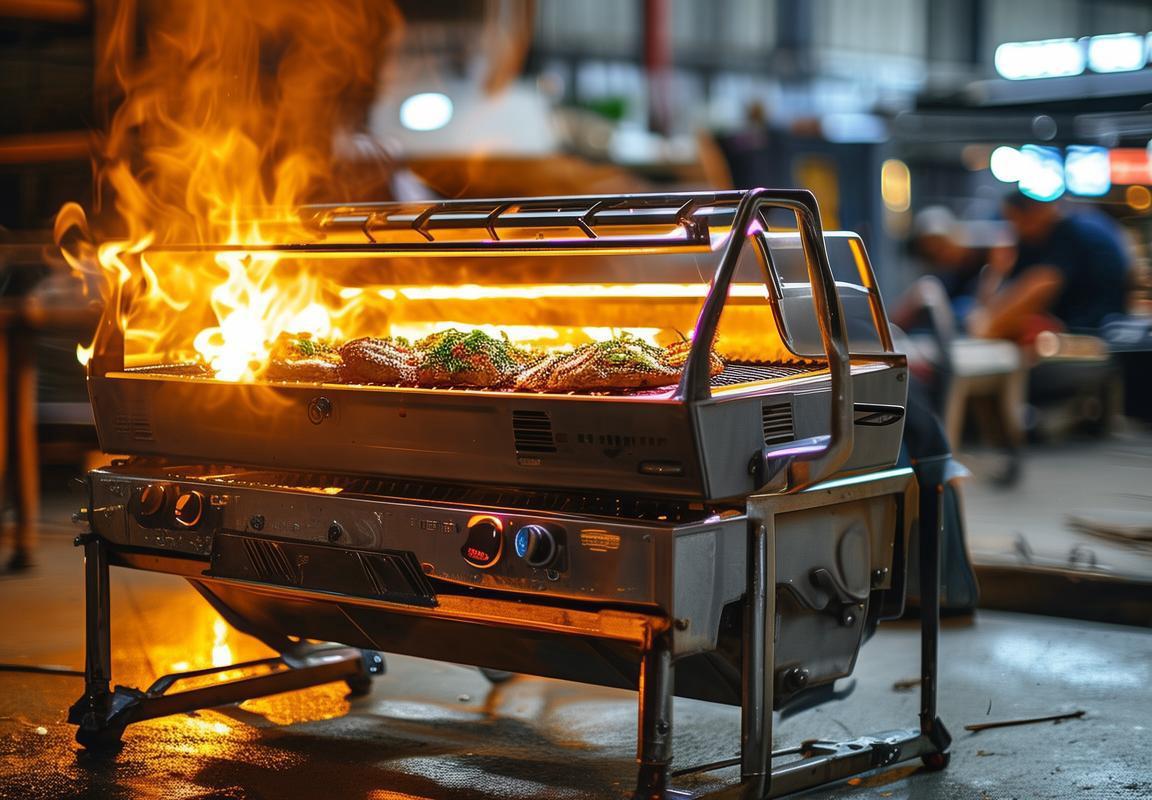
Key Players in the Industrial Smokeless Grill OEM Sector
In the realm of industrial smokeless grill OEMs, several key players have emerged as leaders in the sector, each bringing unique strengths and innovative solutions to the table. Here’s a closer look at some of the most influential companies shaping the smokeless grill OEM landscape:
Innovative Engineering and Design– Company A has gained a reputation for its cutting-edge engineering and design capabilities. Their smokeless grills are not only efficient but also aesthetically pleasing, appealing to a wide range of commercial clients.
Global Supply Chain Expertise– Company B stands out for its extensive global supply chain network. This network allows them to source high-quality components from around the world, ensuring that their OEM smokeless grills are both cost-effective and reliable.
Customization and Flexibility– Company C is known for its commitment to customization. They offer a variety of design options and features, allowing clients to tailor the smokeless grills to their specific needs and branding requirements.
Quality Assurance and Compliance– Company D has a robust quality assurance process that ensures every smokeless grill meets the highest industry standards. Their focus on compliance with international regulations has made them a trusted partner for many brands.
Innovative Technology Integration– Company E has been at the forefront of integrating the latest technologies into smokeless grills. From smart controls to energy-efficient heating systems, their products are a testament to their dedication to innovation.
Sustainability and Eco-Friendly Solutions– Company F has made a name for itself by focusing on sustainability. Their smokeless grills are designed with eco-friendly materials and manufacturing processes, appealing to businesses looking to reduce their environmental footprint.
Strategic Partnerships and Collaborations– Company G has leveraged strategic partnerships to expand its reach and capabilities. By collaborating with leading brands and research institutions, they have been able to develop some of the most advanced smokeless grill solutions on the market.
Market Expansion and International Sales– Company H has successfully expanded its market presence through strategic international sales channels. Their smokeless grills are now available in numerous countries, catering to diverse culinary cultures and preferences.
Customer Support and Service– Company I is renowned for its exceptional customer support and service. They offer comprehensive training, maintenance, and after-sales support, ensuring that their clients receive the best possible experience.
Cost-Effective Solutions for Small to Medium Enterprises– Company J specializes in providing cost-effective smokeless grill solutions for small to medium enterprises. Their focus on affordability without compromising on quality has made them a popular choice among budget-conscious businesses.
Innovative Marketing and Branding– Company K has a strong marketing and branding team that helps its clients stand out in the market. They offer creative branding solutions and marketing strategies that enhance the visibility and appeal of their OEM smokeless grills.
Continuous Research and Development– Company L invests heavily in research and development, constantly pushing the boundaries of smokeless grill technology. Their commitment to innovation ensures that they stay ahead of the curve in the industry.
These key players in the industrial smokeless grill OEM sector have,。 Whether it’s through cutting-edge design, global supply chain management, or a focus on sustainability, these companies are setting the pace for the future of smokeless grilling.
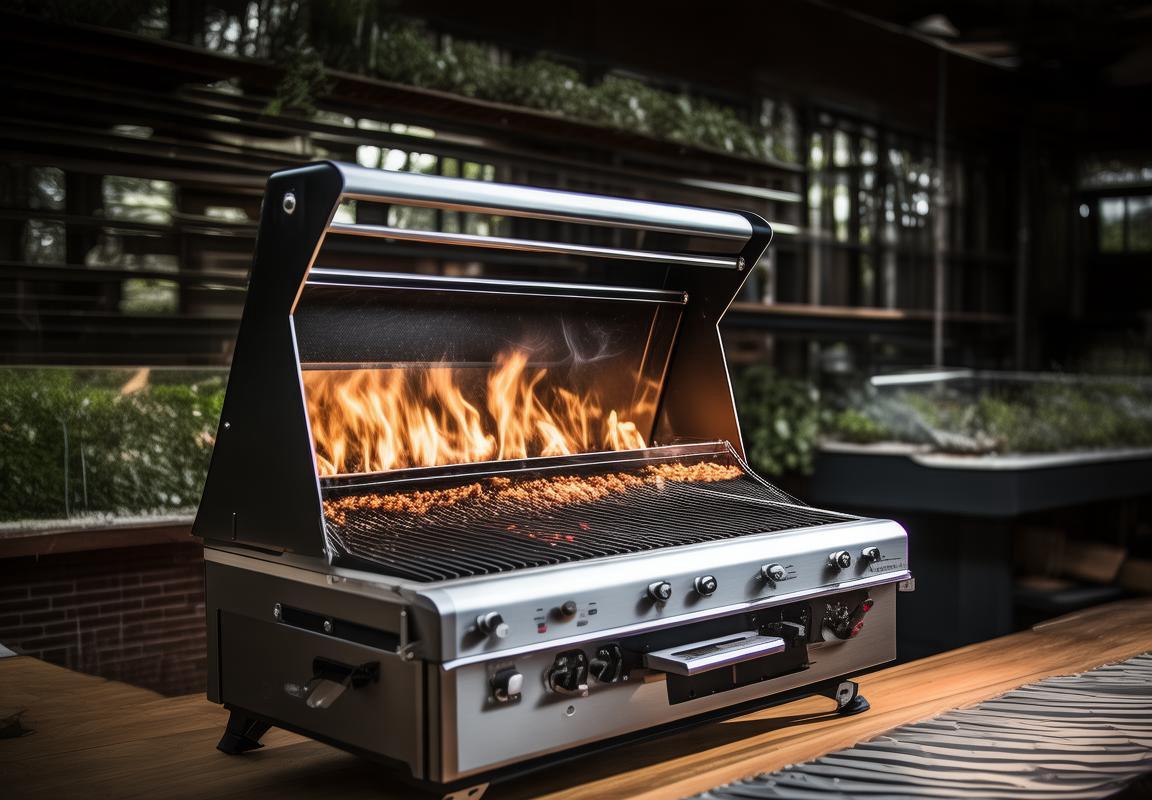
Consumer Insights and Trends
In the ever-evolving landscape of the smokeless grill industry, understanding consumer insights and trends is paramount for OEMs looking to stay ahead. Here’s a delve into the latest consumer behaviors and preferences shaping the market:
The Shift Towards Health-Conscious CookingConsumers are increasingly aware of the health implications of traditional grilling methods, which often result in smoke and harmful compounds. This shift has led to a surge in demand for smokeless grills, as they offer a healthier alternative that minimizes smoke and carcinogens.
Eco-Friendly and Sustainable ChoicesEnvironmental concerns are at the forefront of many consumers’ minds. As a result, there’s a growing preference for smokeless grills made from sustainable materials and produced with eco-friendly processes. OEMs that can offer these green credentials are likely to capture the attention of environmentally conscious consumers.
Smart Technology IntegrationThe integration of smart technology in smokeless grills is becoming a key trend. Consumers are drawn to features like remote control capabilities, digital temperature settings, and WiFi connectivity, which allow for greater convenience and precision in cooking.
Versatility and PortabilityAs life becomes more fast-paced, consumers are seeking smokeless grills that offer versatility and portability. Grills that can be used indoors or outdoors, and those that are easy to store or transport, are gaining popularity due to their convenience and adaptability to various cooking scenarios.
Social Media and Influencer InfluenceSocial media has become a powerful tool for shaping consumer trends. Influencers and food bloggers play a significant role in promoting smokeless grills by showcasing their ease of use, delicious results, and stylish designs. OEMs that leverage these platforms effectively can tap into a broader consumer base.
Health and Wellness Driven MarketingMarketing strategies that focus on health and wellness are resonating with consumers. OEMs that emphasize the health benefits of smokeless grilling, such as reduced smoke and lower fat content, are more likely to attract health-conscious consumers who are looking to improve their diet.
Customization and PersonalizationConsumers are looking for products that cater to their unique preferences. Customizable options, such as different grill plate materials, temperature control settings, and design choices, are becoming increasingly important. OEMs that offer a high degree of personalization can stand out in a crowded market.
Culinary Exploration and ExperimentationThe rise of smokeless grills has opened up new culinary possibilities. Consumers are eager to explore different cooking techniques and flavors, leading to a trend towards experimentation. OEMs that support this trend with a range of accessories and recipe guides can help consumers expand their culinary horizons.
Sustainability and Social ResponsibilityConsumers are not just looking for sustainable products but also for brands that demonstrate social responsibility. OEMs that engage in sustainable practices, such as charitable initiatives or support for local communities, can build trust and loyalty among consumers.
The Role of Reviews and TestimonialsOnline reviews and testimonials have a significant impact on consumer purchasing decisions. Positive feedback from satisfied customers can be a powerful tool for OEMs looking to build credibility and trust. Encouraging and showcasing reviews can help convert potential buyers.
The Importance of Brand StorytellingConsumers are drawn to brands that have a compelling story. OEMs that can articulate their brand values, mission, and the story behind their products often connect more deeply with customers. Storytelling can be a key differentiator in a competitive market.
In conclusion, the smokeless grill market is being shaped by a variety of consumer insights and trends. By understanding these dynamics, OEMs can tailor their products and marketing strategies to meet the evolving needs and preferences of their target audience.
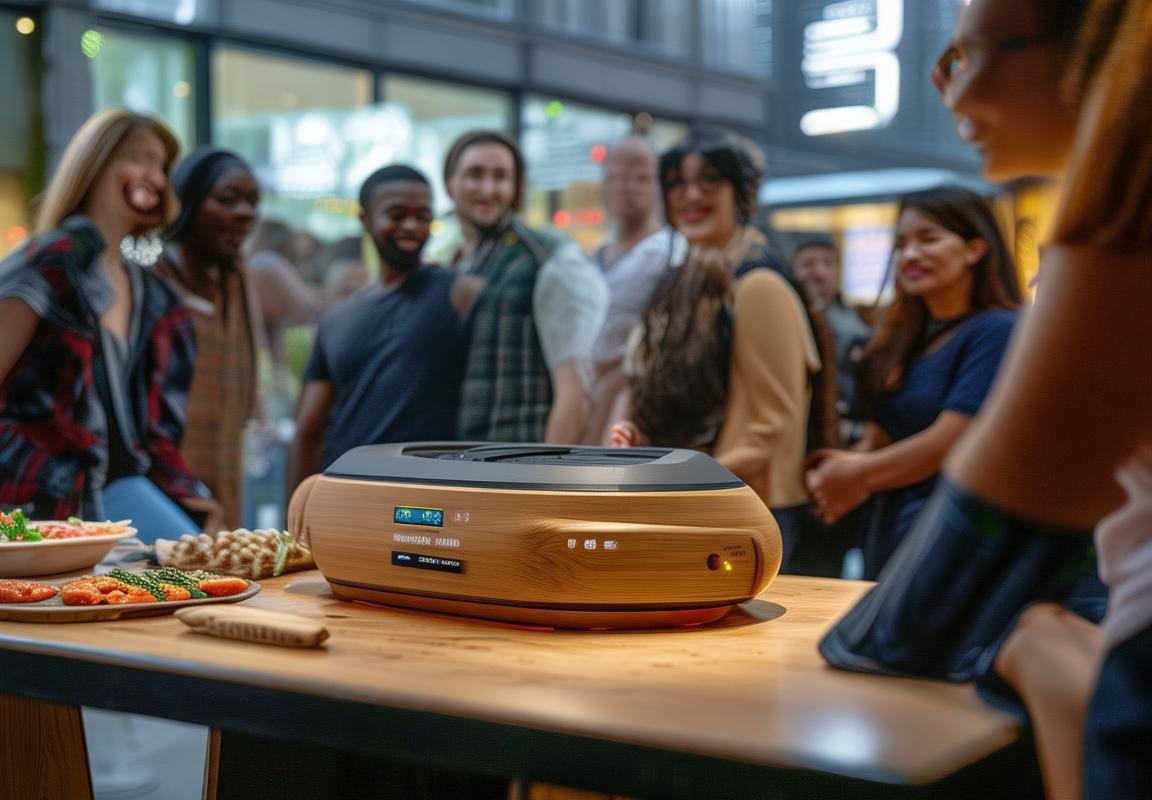
Regulatory Landscape and Compliance
The regulatory landscape for smokeless grills is a complex web of local, regional, and international laws and standards. Ensuring compliance is crucial for OEMs looking to enter or expand within the market. Here’s a closer look at the key aspects:
Grill emissions and air quality regulations are stringent in many Western countries. These regulations dictate the maximum allowable levels of particulate matter, carbon monoxide, and other pollutants that can be emitted from a smokeless grill. OEMs must design and manufacture their products to meet these specific emission standards, often requiring advanced technologies and materials.
Fire safety is another critical concern. Local fire codes and insurance requirements often dictate the types of materials that can be used in grill construction and the presence of safety features like heat sensors and automatic shut-off mechanisms. OEMs must navigate these requirements to ensure their products are not only effective but also safe for consumers.
Energy efficiency is also a growing focus in the regulatory landscape. As environmental concerns escalate, governments are pushing for more energy-efficient appliances. Smokeless grills, which typically use less fuel than traditional charcoal or wood-burning grills, are seen as a step towards more sustainable cooking solutions. OEMs must balance performance with energy efficiency to appeal to environmentally conscious consumers.
Food safety regulations are stringent, especially when it comes to the surfaces and materials that come into contact with food. OEMs must use non-toxic, food-grade materials for grill components and ensure that their products are easy to clean and maintain to prevent cross-contamination.
Noise regulations are another area that OEMs must consider. Some areas have restrictions on the noise levels produced by outdoor appliances, which can affect the design and operation of smokeless grills. Ensuring that the grill is quiet enough to meet these standards can be a challenge, but it’s essential for OEMs to maintain a positive consumer experience.
Product labeling and advertising are also subject to scrutiny. OEMs must provide clear and accurate information about their products, including material content, energy consumption, and any health or environmental benefits. Misleading claims can lead to legal action, so compliance with advertising standards is vital.
In addition to local regulations, OEMs must also consider international standards and certifications that can enhance their marketability. For example, the European Union’s CE marking signifies conformity with its health, safety, and environmental protection requirements. Obtaining this certification can open doors to new markets and consumers who recognize and prefer certified products.
Certifications like NSF (National Sanitation Foundation) or UL (Underwriters Laboratories) are also valuable, as they provide third-party verification of product safety and performance. These certifications can be particularly important for OEMs looking to enter the North American market, where consumers are highly attuned to product safety and reliability.
The regulatory landscape is not static; it evolves with new scientific research, technological advancements, and changing public opinion. OEMs must stay informed about these changes and be prepared to adapt their products and manufacturing processes accordingly.
Innovation in smokeless grill technology is also driven by the need for compliance. For example, the development of catalytic converters and other advanced filtration systems is a direct response to emission regulations. Similarly, the integration of smart technology into grills allows for better monitoring and control of cooking temperatures and times, helping OEMs meet energy efficiency standards.
The regulatory landscape and the need for compliance can be seen as both challenges and opportunities for OEMs in the smokeless grill industry. By staying ahead of the curve and investing in research and development, companies can not only meet legal requirements but also differentiate their products in a competitive market. Compliance is not just about avoiding penalties; it’s about building trust with consumers and establishing a reputation for quality and safety.
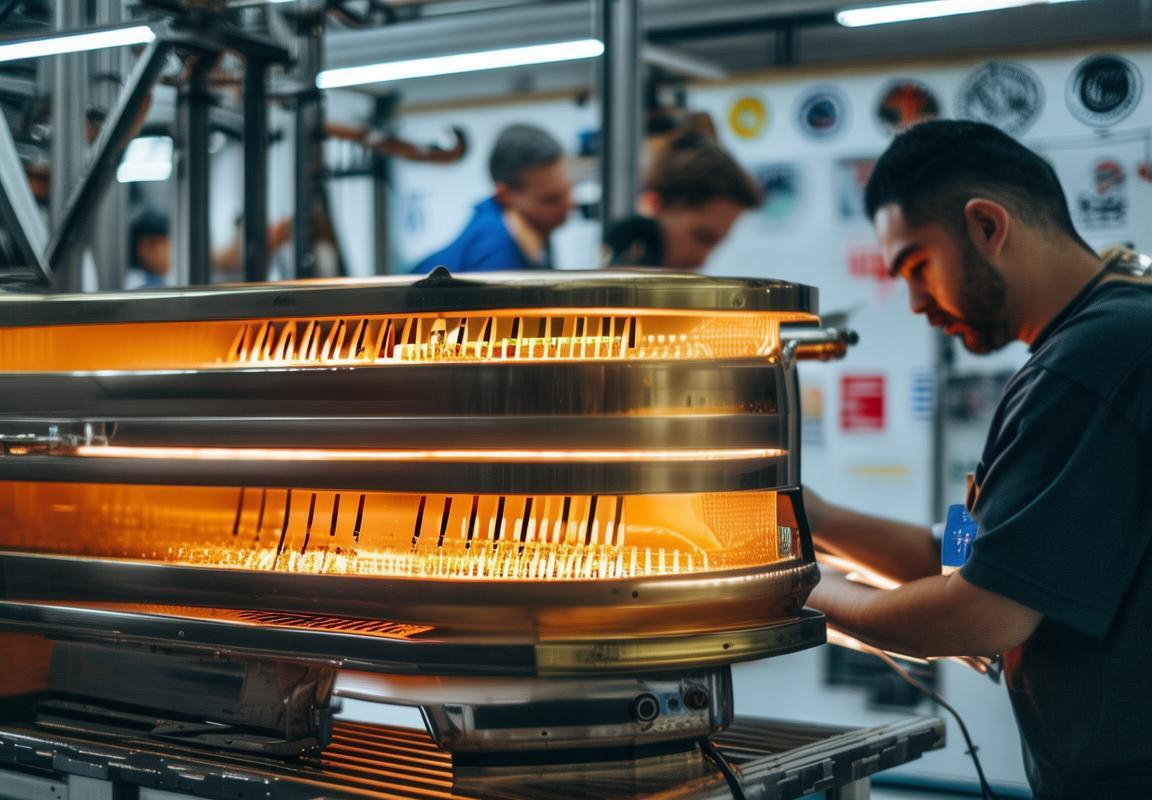
Challenges and Opportunities for OEMs
Navigating the competitive landscape, Original Equipment Manufacturers (OEMs) in the smokeless grill industry face a unique set of challenges and opportunities. Here’s an exploration of the key hurdles and the promising avenues that lie ahead.
OEMs must continuously innovate to stay ahead of market demands, which means investing in research and development. With consumers increasingly seeking eco-friendly and high-performance appliances, OEMs must allocate resources to develop new technologies that reduce smoke emissions and enhance grilling experiences.
Meeting stringent safety standards is a critical challenge for OEMs. Different regions have varying regulations regarding emissions, material safety, and energy efficiency. Adhering to these diverse requirements can be complex, yet it’s essential for maintaining a good reputation and ensuring customer satisfaction.
Another challenge is the need for scalability. OEMs must be able to adapt to fluctuating market demands without compromising on quality. This requires efficient supply chain management and the ability to quickly adjust production capacity to meet orders, whether they’re for a small batch or a large-scale production run.
Despite these challenges, there are several opportunities that OEMs can capitalize on:
-
Global Expansion: As the demand for smokeless grills grows globally, OEMs can explore new markets and expand their customer base. This could involve adapting products to meet local preferences or regulations, offering customized solutions to international brands, and leveraging digital platforms to reach a wider audience.
-
Strategic Partnerships: Forming alliances with other companies can be a game-changer for OEMs. By teaming up with research institutions, for instance, they can tap into cutting-edge technology and share the cost of R&D. Collaborating with distributors and retailers can also help in gaining deeper market insights and improving distribution channels.
-
Sustainability Focus: The shift towards sustainability presents a significant opportunity for OEMs. By emphasizing eco-friendly materials and manufacturing processes, they can appeal to environmentally conscious consumers. This not only benefits the planet but also opens up a new market segment for sustainable living products.
-
Technological Integration: The integration of smart technology into smokeless grills is a trend that’s likely to grow. OEMs can leverage advancements in IoT (Internet of Things) to create smart grills that offer connectivity, remote control, and personalized grilling settings. This not only adds value to the product but also differentiates it from competitors.
-
Health and Wellness: With a growing focus on health and wellness, OEMs can focus on developing smokeless grills that are not only eco-friendly but also promote healthier lifestyles. Features like smokeless cooking, easy cleaning, and healthy cooking options can attract consumers who prioritize their well-being.
-
E-commerce and Direct-to-Consumer Models: The rise of e-commerce and direct-to-consumer sales channels offers OEMs an opportunity to reduce costs and improve margins. By selling directly to consumers, OEMs can avoid middlemen, gain valuable customer feedback, and build brand loyalty.
-
Customization: Offering customized solutions is another way for OEMs to stand out. By allowing brands to choose specific features, design elements, and materials, OEMs can cater to niche markets and create unique products that meet the exact needs of their clients.
In summary, while challenges in the smokeless grill OEM sector are multifaceted, the opportunities are vast and varied. By staying adaptable, innovative, and customer-focused, OEMs can not only overcome obstacles but also thrive in this dynamic and evolving industry.

Case Studies: Success Stories in Industrial Smokeless Grill OEM
In the realm of industrial smokeless grill OEMs, several success stories have emerged, showcasing the potential and effectiveness of these partnerships. Here are a few notable examples:
The partnership between GreenGlow Grills and EcoTech Innovations stands out as a prime example of a successful OEM collaboration. EcoTech, a leading manufacturer of advanced cooking technologies, designed a smokeless grill that GreenGlow Grills branded and sold under their own label. The result was a product that not only met the stringent quality standards of EcoTech but also resonated with consumers seeking healthier and more sustainable cooking options.
The grill, which incorporates innovative heat distribution and filtration systems, has been a hit in the market, with GreenGlow Grills experiencing a significant boost in sales. This success can be attributed to EcoTech’s expertise in the field, combined with GreenGlow’s marketing prowess and customer base.
Another compelling success story is that of Sunbeam Appliances, which OEMed a line of smokeless grills from HeatWave Technologies. Sunbeam, known for its home appliances, leveraged HeatWave’s cutting-edge smokeless technology to create a product that appealed to health-conscious consumers and eco-friendly households.
The HeatWave grill, which features a compact design and a user-friendly interface, has been well-received by consumers. Sunbeam’s brand recognition and distribution channels have played a crucial role in the product’s success, while HeatWave’s technical acumen has ensured the grill’s performance and reliability.
In the foodservice industry, the collaboration between commercial kitchen equipment giant Kitchen King and CleanFlame Systems has led to the development of a smokeless grill that is now a staple in many restaurants and catering services. Kitchen King, with its extensive network of commercial clients, was able to introduce CleanFlame’s smokeless technology to a wide audience.
The CleanFlame grill, which is designed to minimize smoke and odors, has been particularly beneficial for establishments looking to improve their indoor air quality. The partnership allowed Kitchen King to offer a unique product that addresses the specific needs of the commercial market, while CleanFlame expanded its reach into the commercial sector.
A unique case study involves the collaboration between a small, local grill manufacturer and a global technology company. The local company, known for its traditional charcoal grills, sought to innovate and entered into an OEM agreement with TechGuru Inc., a firm specializing in smart home appliances.
The outcome was a smart smokeless grill that combines the local company’s craftsmanship with TechGuru’s advanced technology. This hybrid product has been a hit with consumers who appreciate the blend of traditional cooking methods with modern convenience. The success of this partnership lies in the fusion of local expertise and global innovation, creating a product that appeals to a diverse customer base.
These case studies highlight the diverse range of successes in the industrial smokeless grill OEM sector. From small-scale collaborations between local manufacturers and global tech giants to large-scale partnerships between established appliance brands and cutting-edge technology companies, the common thread is the ability to leverage each partner’s strengths to create a product that meets market demands and stands out in a competitive landscape.

Conclusion
In reflecting on the journey of the industrial smokeless grill OEM sector, it’s clear that while challenges persist, opportunities abound. OEMs must navigate a landscape that’s ever-evolving, with new technologies, shifting consumer preferences, and an increasingly competitive market. Here are some of the key challenges and opportunities that define this dynamic industry.
The demand for customization and personalization continues to rise, compelling OEMs to innovate and offer tailored solutions. This shift requires a deep understanding of market trends and a willingness to invest in research and development. The ability to adapt quickly to these changing demands can be a significant opportunity for OEMs that can stay ahead of the curve.
Supply chain disruptions have been a major challenge, especially in the wake of global events. OEMs have had to find new ways to manage their supply chains, from diversifying suppliers to implementing just-in-time manufacturing. This has led to increased resilience but also presented the opportunity to forge stronger, more reliable partnerships with suppliers.
Environmental concerns are at the forefront, with a growing emphasis on sustainability. OEMs that can produce smokeless grills with eco-friendly materials and energy-efficient designs are not only addressing regulatory requirements but also tapping into a market segment that values sustainability. This can open doors to new markets and consumer loyalty.
The integration of smart technology into smokeless grills is another area ripe with opportunity. As consumers become more tech-savvy, they seek products that offer convenience, connectivity, and smart features. OEMs that can incorporate these technologies into their products can differentiate themselves and attract a tech-forward consumer base.
Regulatory compliance remains a challenge, with varying standards across different regions. Navigating these complexities requires a thorough understanding of local regulations and a commitment to quality control. However, this also presents an opportunity to become a trusted partner for brands looking to enter new markets or expand their product lines.
The rise of e-commerce has transformed how consumers discover and purchase products. OEMs that can leverage online platforms effectively can reach a broader audience and benefit from lower overhead costs. This shift towards digital sales also allows for direct customer feedback, which can be invaluable for product improvement and innovation.
Labor challenges, such as skilled workforce shortages, can impact production timelines and quality. Addressing these issues may involve investing in training programs or automating certain processes. While this can be a significant investment, it also presents the chance to improve efficiency and reduce long-term labor costs.
Lastly, the need for continuous improvement and innovation is a challenge that also presents an opportunity. OEMs that can invest in ongoing research and development are better positioned to anticipate market changes and introduce new features or technologies that keep them competitive.
In conclusion, the challenges and opportunities in the industrial smokeless grill OEM sector are intertwined. It’s a landscape where innovation, sustainability, and adaptability are not just buzzwords but essential strategies for success. OEMs that can embrace these challenges and capitalize on the opportunities will be well-positioned to thrive in an industry that’s poised for continued growth and transformation.